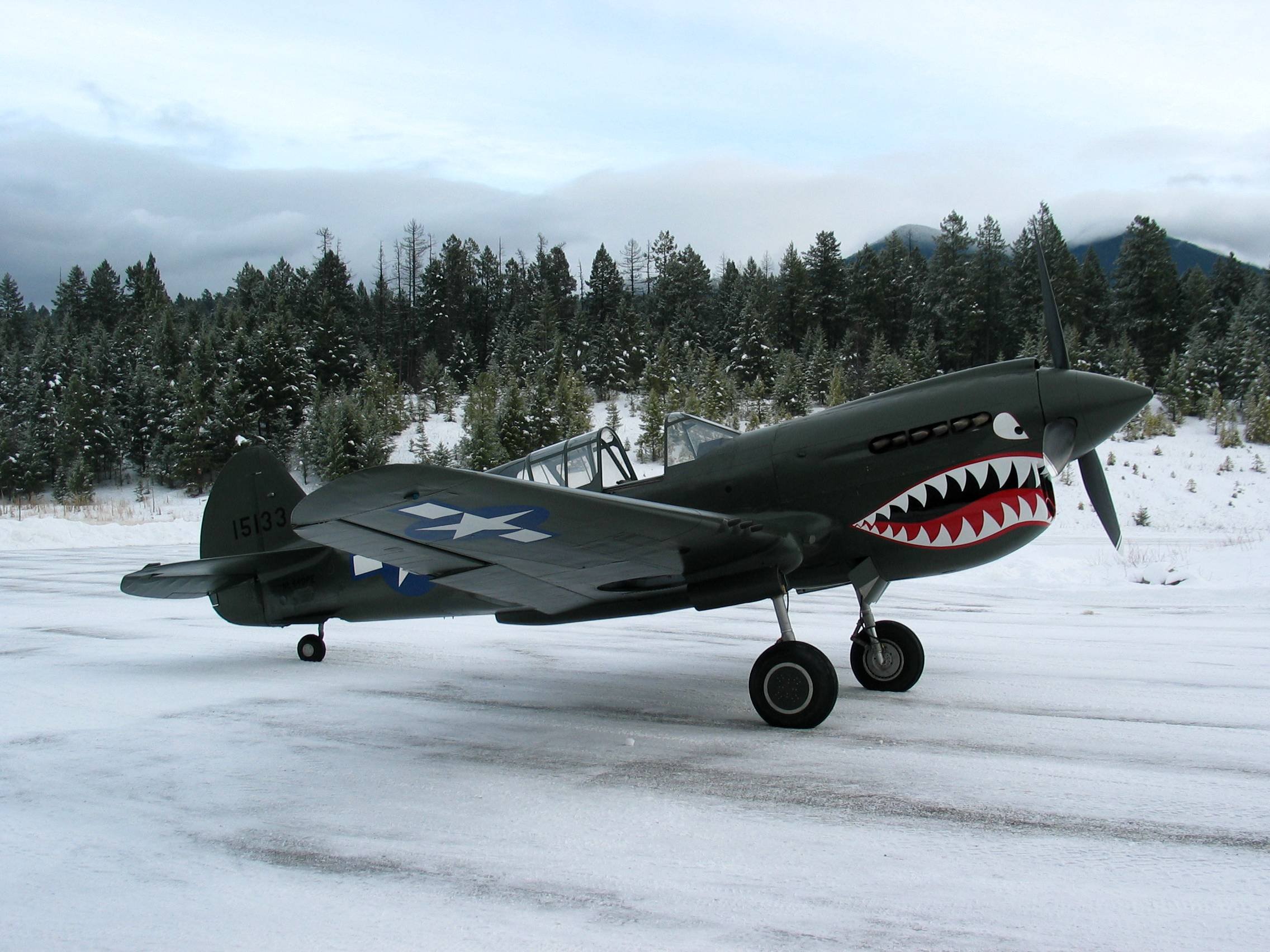1941 Curtiss P-40E “Kittyhawk”
Known as the “Kittyhawk” by the Canadians, “Tomahawk” by the British or “Warhawk” in the United States, the P-40 was the first-line Army Air Corps fighter at the start of World War II before giving way to more advanced designs such as the P-51 Mustang, P-38 Lightning and P-47 Thunderbolt. It was rugged and effective and, possibly most importantly, was available in large numbers early in the war when the United States and her allies urgently needed them. The P-40 remained in production from 1939 to the end of 1944 with a total production of 13,737 aircraft.
As wartime experience in the P-40 mounted, Curtiss made many modifications including additional armor plate, better self-sealing fuel tanks, and more powerful engines. They modified the cockpit to improve visibility and changed the armament package to six wing-mounted .50 caliber machine guns. The P-40E Kittyhawk was the first model with this gun package and it entered service in time to serve in the legendary Flying Tigers of the American Volunteer Group in China. The last model produced in quantity was the P-40N, the lightest P-40 built in quantity, and much faster than previous models.
The aircraft on display is a Kittyhawk (the export version of the P-40E built for the Royal Air Force) and was the very first P-40 to be diverted from RAF issue to the Royal Canadian Air Force. It served with the RCAF’s 132 Squadron and 133 Squadron at Sea Island, BC, providing coastal defense. 133 Squadron is credited with shooting down two Japanese “Fire Balloons” in early 1945.
Post-WWII, surplus Canadian P-40s (including this one) were sold for as little as $50 each, even though many had been overhauled just before being declared surplus. The Canadian authorities would not allow these former warplanes to be registered and flown. As a result, many, like the one on display, were purchased by private citizens as a source of hardware which was in short supply after the war. This aircraft was purchased by a Lethbridge, Alberta, farmer. It was used as a parts-bin until it was no longer useful to him and ultimately buried in a dry hole in 1952. The aircraft remained 13 feet underground for the next 23 years before being recovered in 1975. Remarkably, the aircraft was still on its wing, free of corrosion and 80% complete. During its excavation, the first parts of the aircraft to be exposed to the light of day after so many years were the exhaust stacks which, to observers, resembled the vertebrae of a dinosaur. Such a visual image caused this Curtiss Kittyhawk to gain the nickname “Curtissaurus Rex.”
A 13 year restoration by Steve Seghetti in California and Col Pay in Australia produced the fine flying example you see today. This aircraft was acquired by Jim Smith in 1994.

![american_p-40_fighter_planes-1024x770[1].jpg](https://images.squarespace-cdn.com/content/v1/640a18554fba7d40bce6a349/5d7bce70-6530-4f9c-9cd4-23773393c179/american_p-40_fighter_planes-1024x770%5B1%5D.jpg)



